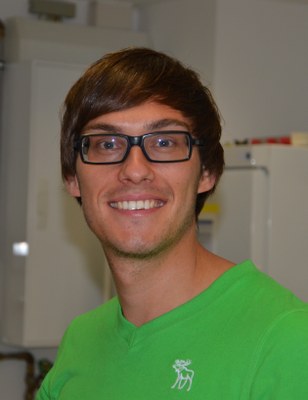Dr. Benjamin Krause
|
|
Room: 401 Email: benjamin.krause@hu-berlin.de Tel: (030) 2093 8686 |
Channelrhodopsins (ChRs) are light-gated cation channels widely used in optogenetics because they can trigger depolarization of membrane potential upon illumination. Although more than a decade of intensive research on these kind of photoreceptors profund knowledge about the exact mechanism is lacking. In order to gain insights in regard to channel function, particularly the event of channel opening, a broad range of spectroscopic methods is applied. Besides well-established standard techniques like UV-Vis (stationary, transient) and IR spectroscopy, Stark-Effect-IR is part of our toolkit and represents a remarkable technique to track local dynamics within the photocycle. The IR-active azido-label is site-specifically introduced by amber stop codon suppression into expressed ChRs. In addition to direct interrogation of azido-containing amino acids, exploiting the chemical property of the azido group as bio-orthogonal coupling site is used to functionalize ChR.
